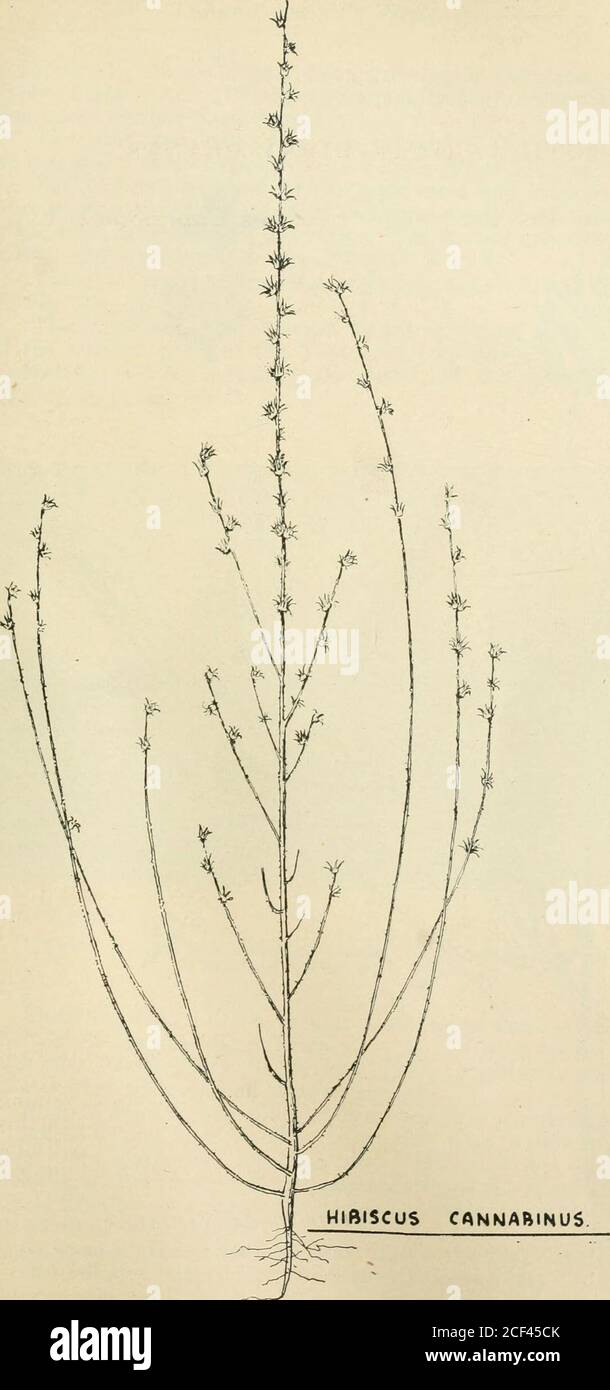. Journal of the Department of Agriculture, Union of South Africa. ties from wliich the best specimens of fibre yet submitted toLondon merchants have been obtained, there is reason to believe thatthis plant will become more extensively grown for export trade. In South Africa at the present time Hibiscus cannabinus L. as afibre plant is practically unknown. It is certainly not cultivated,but in many places is looked upon as a most noxious weed. In India, where its cultivation is firmly established, two spinningmills have been erected for some years for specially dealing with thisfibre. From it

Image details
Contributor:
Reading Room 2020 / Alamy Stock PhotoImage ID:
2CF45CKFile size:
7.1 MB (171.1 KB Compressed download)Releases:
Model - no | Property - noDo I need a release?Dimensions:
1083 x 2307 px | 18.3 x 39.1 cm | 7.2 x 15.4 inches | 150dpiMore information:
This image is a public domain image, which means either that copyright has expired in the image or the copyright holder has waived their copyright. Alamy charges you a fee for access to the high resolution copy of the image.
This image could have imperfections as it’s either historical or reportage.
. Journal of the Department of Agriculture, Union of South Africa. ties from wliich the best specimens of fibre yet submitted toLondon merchants have been obtained, there is reason to believe thatthis plant will become more extensively grown for export trade. In South Africa at the present time Hibiscus cannabinus L. as afibre plant is practically unknown. It is certainly not cultivated, but in many places is looked upon as a most noxious weed. In India, where its cultivation is firmly established, two spinningmills have been erected for some years for specially dealing with thisfibre. From it practically ail the agricultural cordage used in Indiais manufactured locally. It is also employed in making gunnies, coarse sack cloth, canvas, fishing nets, and paper. Hibiscus cannabinus is an erect annual plant, attaining in SouthAfrica an average height of 5-il feet. In the veld it exhibits con-siderable variation as regards its habit of branching, time of maturity, and robnstness—points which all need careful attention when seed 80UTH African Fibre Plants.. Plate /.] Fi^. 1. Fig. 2. 572 JOURJiiAL OF THE DEPARTMENT OF AGRICULTURE.